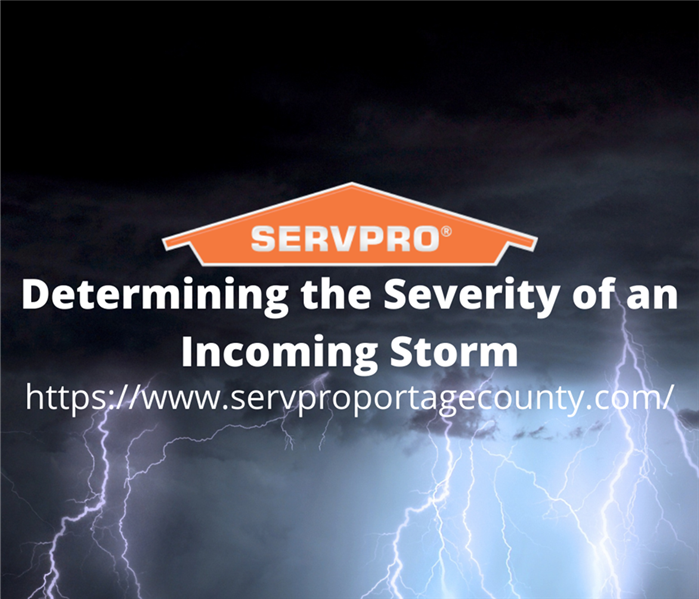Determining the Severity of an Incoming Storm
2/5/2021 (Permalink)
Almost everyone has been told sometime about the “counting rule” when it comes to thunderstorms. You’re told to count one-Mississippi, two-Mississippi, etc, from the moment you see lightning until the moment you hear thunder to determine how close the lightning is to you. Does this actually work? What do the seconds actually mean? This is the most common method of judging a storm and it does actually work. Lightning travels a speed 5 times faster than thunder, so you will always see the lightning first. The number of seconds between the two tells you the distance away the lightning actually is. When you see the lightning you start counting and stop when you hear thunder, whatever the number of seconds is between them tells you how far away the storm is. Divide the number of seconds by 5 and that will tell you how many miles away you are from the lightning. Five seconds between is one mile, fifteen seconds is three miles, and zero seconds means lightning is extremely close and you should be in a safe space. Using this method to determine the distance is common knowledge, but how can you determine the severity of the storm and if there is potential danger coming your way?
- Watch the Clouds Closely - Not all dark clouds are the same and can be used to help determine what is headed your way. If there is a storm coming that has dangerous even deadly potential the clouds will be extremely dark sometimes with a green tint as well. They will be big, low, and close to the ground cumulonimbus clouds and you will notice them rapidly develop vertically. Be sure to watch for any rotation in the clouds as well.
- Pay Attention to the Temperature - Severe storms and tornadoes form when low level, warm and moist air collides with dry cold air above. If you are outside and feel the temperature drop from warm or hot down to brisk in a short span of time you will know there is a severe storm quickly approaching.
- Beware of Sudden Wind and Precipitation Changes - The calm before the storm is not just an expression. If there are an abrupt calm following hail and heavy rain, this doesn’t mean the storm is over it can mean there is potentially dangerous weather coming very soon. A fast and intense wind shift is also a tell.
- Watch vs. Warning - There is often confusion on which of these means what. A watch simply means that tornadoes are possible in and near the watch area. A warning, on the other hand, means that a tornado has been spotted or indicated on the radar. Be sure to seek shelter when a warning is issued in your area.
Being aware of these warning signs can help you determine if the storm approaching is one that allows you to dance in the rain and jump in puddles or one that means you need to take precautions or head on down to the basement. These signs are not full proof as the weather is still vastly unpredictable and can change on a dime. Be sure to take necessary precautions when advised, better safe than sorry is a good rule of thumb when storms are on the way.





 24/7 Emergency Service
24/7 Emergency Service
